Do you want to explore the ancient houses, the walls covered in lush moss at Hoi An’s old town? Lose yourself in the dreamy ambiance of Hue or immerse yourself in the vibrant atmosphere of Da Nang? You will experience all of this on the 5-day 4-night Da Nang – Hue – Hoi An tour shared by DanangPrivateCar.com’s as follows.
If you are planning to explore the sunny and windy Central Vietnam, then a 5-day 4-night Da Nang – Hue – Hoi An tour is an excellent choice. Let’s pocket some tips from DanangPrivateCar.com’s on how to plan the itinerary, get around, dine, and have a balanced fun in this article!
Table of Contents
Ideal Time for a 5-day 4-night Da Nang – Hue – Hoi An Tour
The climate of Da Nang – Hue – Hoi An falls under the tropical monsoon climate category. However, it doesn’t have the distinct four seasons like the northern region. Instead, the year is divided into two distinct seasons: the rainy season and the dry season.
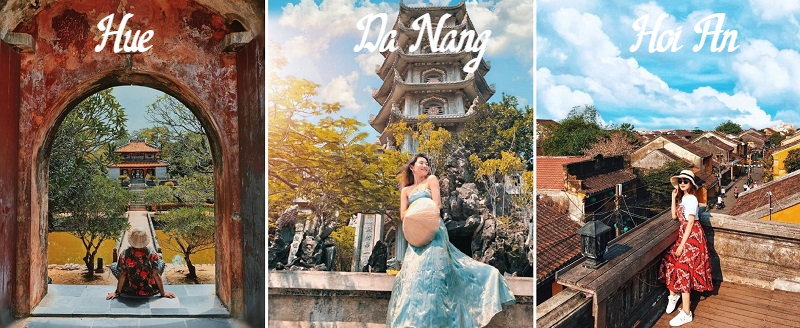
Rainy Season: The rainy season is prevalent in these three provinces/cities as well as other places in Central Vietnam. Frequent rainfall during this time might slightly affect your travel plans.
But there are many good things about traveling during this season. For example, you can experience riding a small boat through the streets of Hoi An amidst the “water world.” You can also visit roadside eateries to enjoy delicious Hue specialties while admiring the falling rain outside – it’s quite poetic, isn’t it?
- Da Nang: From August to December.
- Hue: From October to March of the following year.
- Hoi An: From August to early January of the following year.
Dry Season: During this period, the sky is clear, with gentle winds and warm sunshine, creating a cool and pleasant environment. There is little to no rainfall, making it extremely suitable for travel, sightseeing, beach activities, and other wonderful experiences.
- Da Nang: From January to July.
- Hue: From April to September.
- Hoi An: From late January to July.
Considering the information above and based on DanangPrivateCar.com’s travel experience, the ideal time for a 5-day 4-night Da Nang – Hue – Hoi An tour is from April to July. However, if you can’t plan your trip during this period, don’t worry. Each season in this region has its own unique beauty and interesting aspects waiting for you to discover.
Most Convenient Transportation Guide for the Trip.
Getting to Hue / Da Nang / Hoi An.
With the 5-day 4-night Da Nang – Hoi An – Hue itinerary that I’m suggesting in this article, we’ll fly in/out of Da Nang Airport, then move to Hoi An, and finally reverse to Hue. From Hue, you can take a train / bus… or choose to fly from Phu Bai Airport!
Now let’s explore in detail the most popular and convenient transportation options!
For Domestic Travelers
|
Vehicle |
Hue |
Danang |
Hoi An |
|
Plane |
– Destination: Phu Bai Airport
– Air tickets from Hanoi/Ho Chi Minh City. Ho Chi Minh to Hue ranges from: 400,000 VND – 1,500,000 VND/way/person |
– Destination: Da Nang Airport
– Air tickets from Hanoi/Ho Chi Minh City. Ho Chi Minh to Da Nang ranges from: 350,000 VND – 1,900,000 VND/way/person |
There is no airport |
|
Train |
From Hanoi or Saigon, you can take the North-South train and stop at any provincial station along the train line as you like. Although the travel time is a bit long, in return you will have the experience of riding a train and watching the beautiful Hue – Da Nang sea route from the train. | ||
|
Coach |
The night bus is also a reasonable choice for those who do not suffer from motion sickness. Take a nap and you’ll be there tomorrow morning. Moreover, taking a bus will save a considerable amount of money compared to going by plane or train. | ||
|
Motorbike |
Those who are passionate about backpacking will certainly find it difficult to ignore this way of travel, because the road from the North to the South is very beautiful. However, if you choose to ride a motorbike, remember to prepare your luggage carefully and pay attention to safety! (It’s best to go in groups to support each other) | ||
|
Private car |
If you have your own car to “make a trip” to Da Nang – Hue – Hoi An 5 days 4 nights, it’s too great. While taking the initiative to schedule, you can explore fully and safely. | ||
For International Travelers
For international travelers, flying to Da Nang International Airport is the optimal choice. Currently, there are 38 international airlines operating flights to Da Nang International Airport, many of which connect to Vietnam via transiting flights. From Da Nang, there are 51 international flight routes, including 25 regular direct routes and 26 charter direct routes, with over 250 domestic and international flights daily. This facilitates convenient connections with major transit hubs in Asia and around the world, such as Incheon-South Korea, Narita-Japan, Changi-Singapore, Doha-Qatar, Beijing-China, New Delhi-India, and more.
Additionally, if your country doesn’t have direct flights to Da Nang, you can book a flight to Tan Son Nhat International Airport in Ho Chi Minh City or Noi Bai International Airport in Hanoi, and then take a domestic flight from either of these airports to Da Nang Airport.
Getting Around the City
Private Car: Renting a private car with a driver in Da Nang is a popular choice for international travelers when moving around the city, especially on days of rain or hot sun. If you’re traveling with a group or family, it’s advisable to opt for a private car as it offers safety, comfort, and cost-effectiveness. DanangPrivateCar.com’s is a leading provider of private car services in Da Nang.

Renting a private car with our drivers allows you flexibility during your sightseeing. You can customize your own itinerary or refer to our suggested itineraries, with the assurance of the previously agreed-upon price without additional charges. Our drivers possess basic English skills and years of experience serving international travelers, ensuring your journey is safe and comfortable.
Motorbike: Getting around on a motorbike provides both the freedom to move and the opportunity to immerse yourself in the local way of life. When visiting Da Nang – Hoi An – Hue, you should definitely make a stop at the Hai Van Pass. In that case, booking a motorbike tour from Hoi An to Hue is one of the top choices you should seriously consider.
Cyclo: If you have the chance, don’t miss out on the experience of taking a cyclo ride. Slowly cruising through the charming streets of Hoi An or the dreamy city of Hue will be a memorable part of your trip.
Walking: Walking is an excellent option for leisurely exploration and discovery in Hoi An’s ancient town. The narrow streets of the old town are best explored on foot, allowing you to stroll comfortably while taking in the quaint beauty and the nostalgic atmosphere. It’s a chance to intimately experience the local culture and the daily life of Hoi An’s residents.
Boat/Ferry: To fully appreciate the poetic beauty of Hoi An, you can take a boat ride on the Hoai River at night or hop on a ferry to the beautiful Cu Lao Cham Island for a comprehensive experience.
5-day 4-night Da Nang – Hue – Hoi An Itinerary.
Itinerary:
- Day 1 + 2: On Day 1, arrive at Da Nang Airport, enjoy activities here until late afternoon of Day 2, then drive down to Hoi An (Da Nang – Hoi An: 30km).
- Late on Day 2 + Day 3 + Morning of Day 4: Explore the ancient town + Seven-acre Coconut Forest in Hoi An.
- Day 4 + 5: In the afternoon of Day 4, drive directly from Hoi An to Hue (120km), visit famous sites in the ancient capital, and on the afternoon of Day 5, conclude the journey by returning to Da Nang Airport.
Day 1: Linh Ung Pagoda Son Tra – Marble Mountains – My Khe Beach – Da Nang Night Market – Dragon Bridge
Linh Ung Pagoda Son Tra.
- Address: Linh Ung Pagoda – Hoang Sa – Tho Quang – Son Tra – Da Nang City
Linh Ung Pagoda on Son Tra Peninsula is like a realm of Buddhism amidst the worldly realm, and it’s the most famous pilgrimage site in Da Nang. The pagoda is situated atop a mountain on Bai But Peninsula, Son Tra, so the locals often refer to it as Linh Ung Bai But Pagoda or Linh Ung Son Tra Pagoda. You might wonder why it’s not simply called Linh Ung Pagoda? The reason is that Da Nang actually has three consecutive Linh Ung Pagodas.
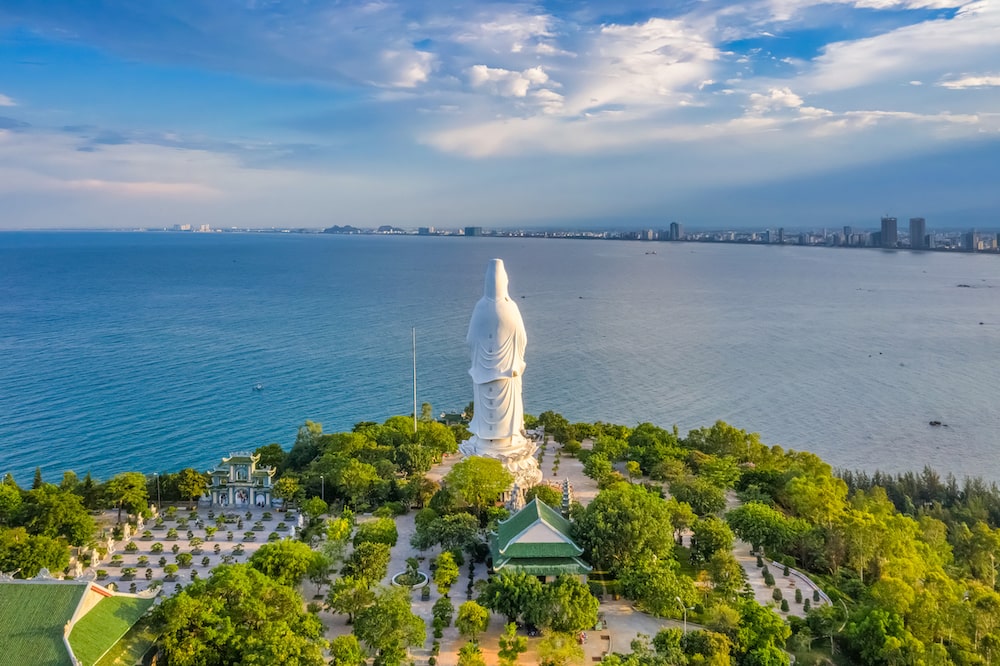
Standing from My Khe Beach, you can see the majestic statue of the Goddess of Mercy amidst the clouds and mountain winds. You can admire the Quan Am Buddha statue from various locations in Da Nang. Conversely, standing by the Quan Am statue, you can also gaze upon Bai But Beach and the modern, bustling city of Da Nang, both day and night.
Marble Mountains – Linh Ung Pagoda Marble Mountains.
When traveling to Da Nang, don’t miss the opportunity to visit the famous Marble Mountains!
According to the travel experience of DanangPrivateCar.com’s, after visiting Marble Mountains, you can head to Linh Ung Pagoda Marble Mountains to admire the scenery and make offerings, which is extremely convenient.
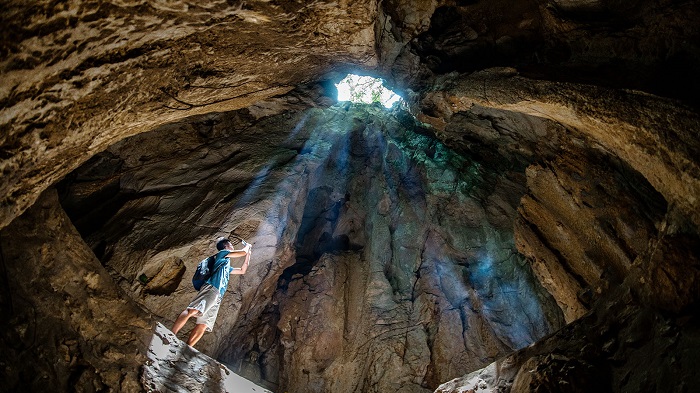
Linh Ung Pagoda Marble Mountains is an ancient pagoda in Da Nang, and it’s also the oldest among the three Linh Ung Pagodas built in the city. The pagoda is located on the eastern side of Thuy Son Mountain, the most beautiful peak within the Marble Mountains complex. This pagoda gained recognition from tourists when it was designated as a national historical relic by the Ministry of Culture.
My Khe Beach.
Enjoying My Khe Beach while traveling in Da Nang is a wonderful option, especially during the summer. Here, you’ll experience numerous exciting activities, such as immersing yourself in the clear blue water, engaging in thrilling water sports, and strolling on the smooth white sands.
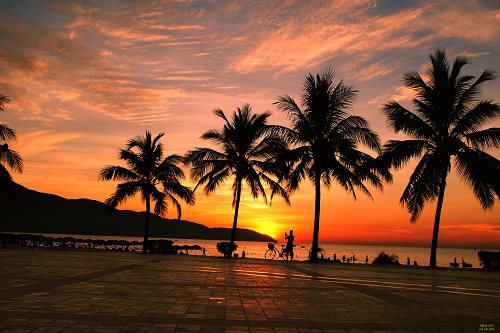
Visiting My Khe Beach, one of the most beautiful beaches in Da Nang, offers you an ideal opportunity to enjoy peaceful tranquility or refreshing feelings as you merge into the gentle waves and the turquoise waters of the sea.
Da Nang Night Market.
When mentioning Da Nang Night Market, Helio Night Market is one of the largest and most renowned night markets. This night market is very popular because it fulfills all your entertainment needs, from affordable dining, picturesque photo spots, shopping, and nightly music to carefree amusement that might make you forget your way back.
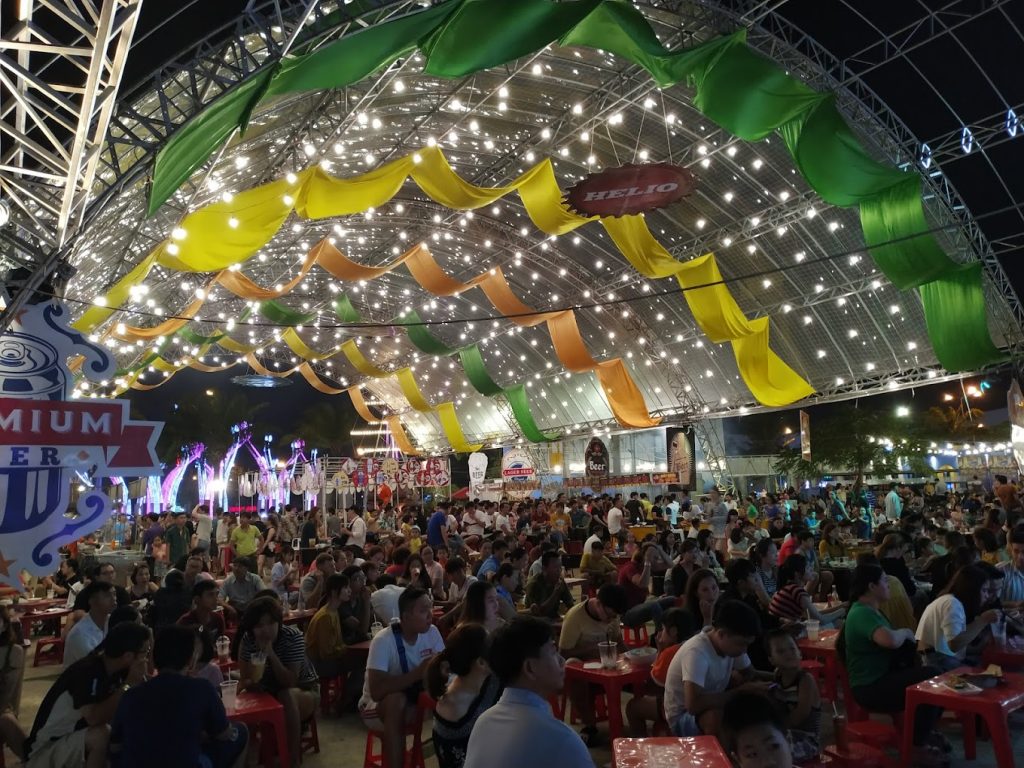
Helio Night Market is known as a nighttime culinary paradise in Da Nang, featuring hundreds of delightful Da Nang dishes, spanning all types from snacks, hearty meals, fresh seafood, barbecue, beer, milk tea, lemon tea, ice cream, and even Da Nang specialties.
You can find any type of cuisine you desire here. Besides its diverse food section, Helio Night Market also entices visitors with its bustling shopping area, offering easily purchasable items, cute accessories, and a plethora of choices tailored to your preferences.
Dragon Bridge.
- Address: An Hai Tay – Son Tra – Da Nang
Being the number one livable city in Vietnam, Da Nang is also known as the city of bridges due to its numerous unique and legendary bridges. When visiting Da Nang, you should definitely make a stop at one of the most famous bridges here, which is the Dragon Bridge.
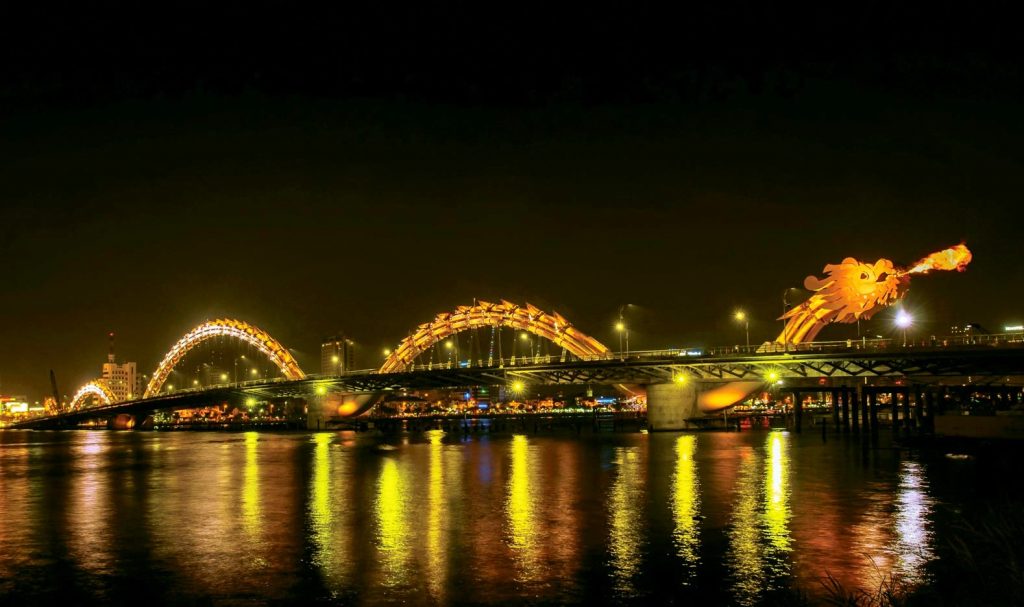
Day 2: Ba Na Hills – Hoi An Ancient Town at Night.
Ba Na Hills.
For those visiting Da Nang for the first time, a visit to Ba Na Hills is a must due to the beauty that many tourists have praised about this place. It can be said that Ba Na Hills is a miniature Europe atop a mountain, one of Da Nang’s unique and priceless attractions in Vietnam. To reach the summit of Ba Na Mountain, you will need to take a cable car ride.
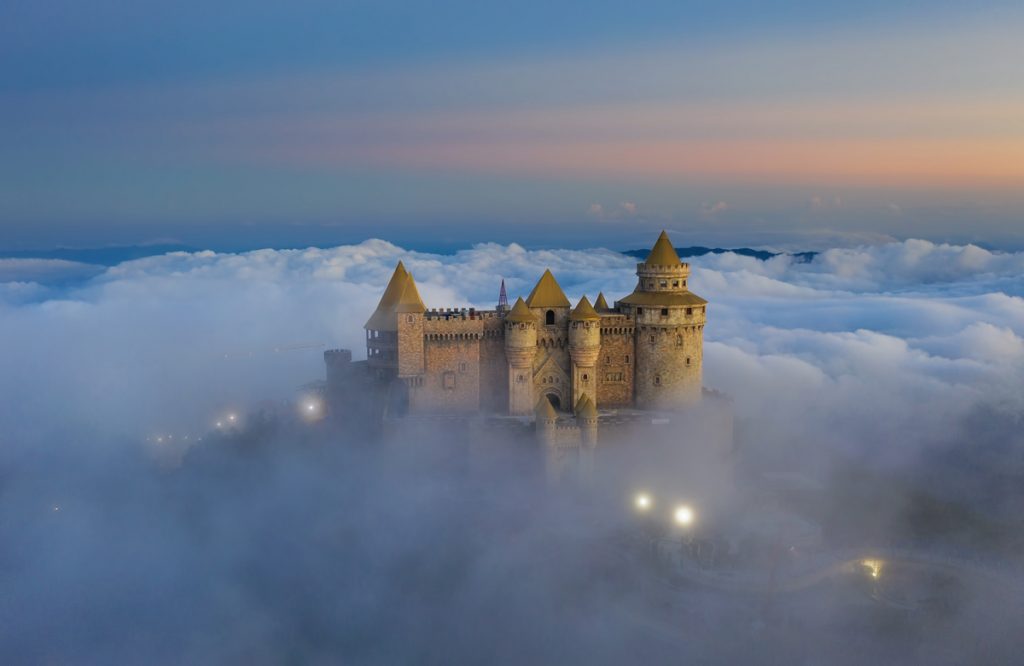
Besides the space with romantic French architecture, Ba Na Hills offers a convergence of alluring luxury services atop the mountain, including restaurants, the Fantasy Park amusement park, Debay wine cellar, wax museum, flower garden, and more. Another highlight of this Da Nang tourist destination is its ability to experience all four seasons in a single day.
Visiting Ba Na Hills, you’ll undoubtedly have unforgettable experiences and take memorable photos that will make you feel as if you’re wandering around Europe.
Hoi An Ancient Town at Night.
Japanese Covered Bridge in Hoi An.
As night falls, the Japanese Covered Bridge becomes even more beautiful and dazzling than ever. The bridge is illuminated by shimmering lights that continuously change colors, creating a beautiful and colorful scene before the eyes of visitors. Strolling to admire the radiant Japanese Covered Bridge is an essential experience when exploring Hoi An at night.

Nighttime River Cruises.
One of the highlights of Hoi An’s night scene is the Hoai River. The Bach Dang Street with its golden lights from the rows of ancient houses reflecting on the Hoai River creates a romantic and poetic backdrop.
Experiencing a boat ride and releasing floating lanterns on the Hoai River will surely be a memorable moment during your trip. You can rent a small boat to drift down the Hoai River, silently admiring the tranquil and mystical Hoi An at night while listening to stories of this land from the boatman in a peaceful atmosphere.
Luminous Lantern Streets.
Very few people visit Hoi An without taking a beautiful photo next to various types, sizes, and vibrant colors of lanterns. It’s not difficult to spot these lanterns; just take a few steps, look up, and you’ll see a “lantern sky” appearing, and a few more steps will unveil another “lantern sky.”
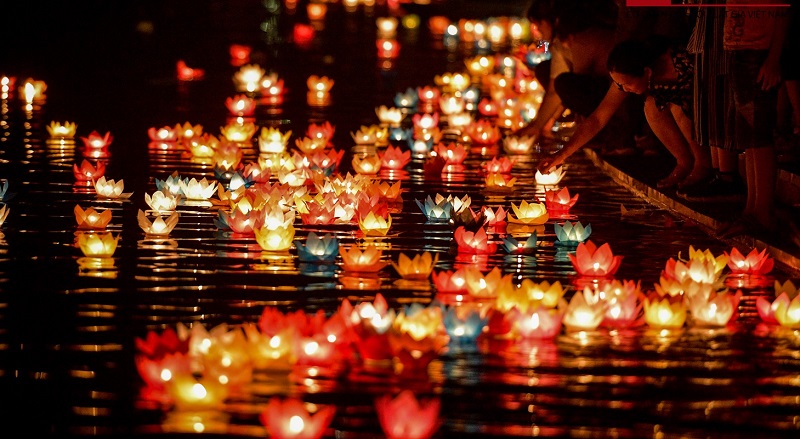
The best time to capture the luminous lantern streets is when the entire Hoi An Ancient Town is illuminated. During this time, simply capturing a photo will yield a sparkling and charming image!
Traditional Folk Games in the Ancient Town.
To provide tourists with more enjoyable experiences during their stay in this area, most night markets or streets like Nguyen Thai Hoc Street in the ancient town organize various traditional folk games. Amid the lively atmosphere, you can participate in games like blindfolded pot smashing, hitting pots, or singing chòi songs. These activities hold great significance and allow travelers to gain a deeper understanding of the folk culture of Hoi An’s residents.
Hoi An Street Cafes.
After strolling around the ancient town, you can take a break at charmingly designed cafes with beautiful views in Hoi An to capture picturesque photos.

Day 3: Tra Que Vegetable Village – Bay Mau Coconut Forest.
If you’re thinking that visiting Hoi An only involves exploring the beautiful and famous tourist spots with their ancient and nostalgic charm, well, that’s a “big mistake” indeed. Hoi An city has another incredibly attractive destination for you, and that’s TRA QUE VEGETABLE VILLAGE – BAY MAU COCONUT FOREST.
From Hoi An Ancient Town, you can take a private car to travel from Hoi An to Bay Mau Coconut Forest, which takes about 15 minutes. After enjoying your exploration there, you can return to Tra Que Vegetable Village.
Bay Mau Coconut Forest.
Experiencing coracle boat rides in the Bay Mau Coconut Forest, you will be enchanted by the feeling of serenity as you drift along the water. Witnessing the boat dance performances and the skilled maneuvers of local rowers, you’ll feel the vibrant atmosphere that fills the entire river area. The smiles, the warmth, the simplicity, and the kindness of the local villagers will leave a deep impression on the hearts of travelers.
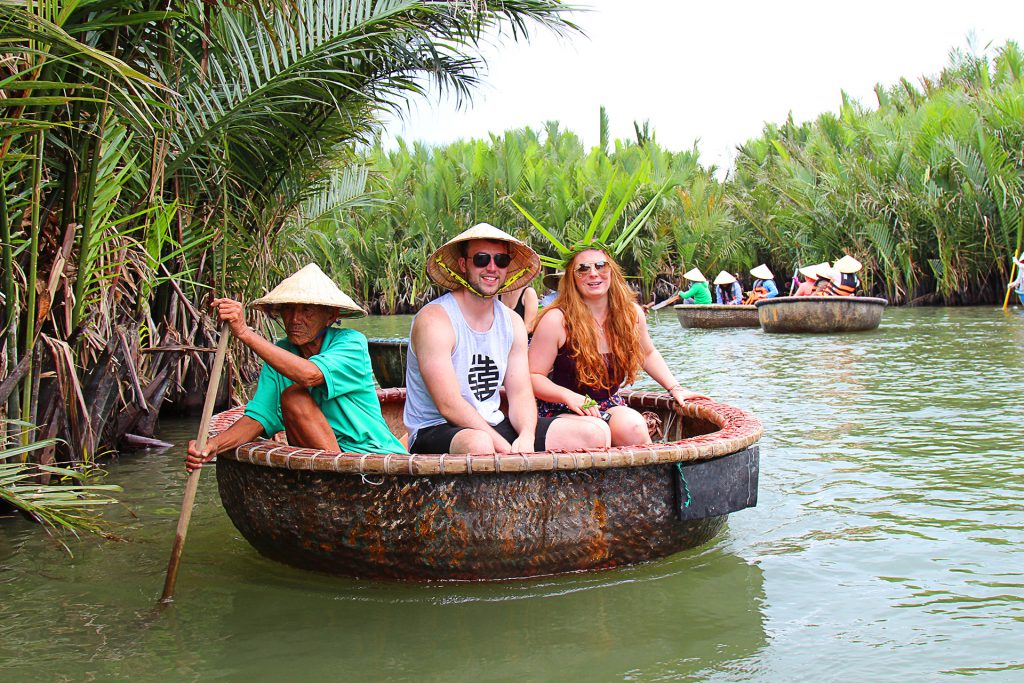
Tra Que Vegetable Village.
Visiting Tra Que Vegetable Village situated along the Co Co River, you’ll immerse yourself in the traditional agricultural activities that are characteristic of Vietnam. Here, you’ll not only enjoy the rustic and tranquil countryside scenery but also become a farmer for a moment, plowing the land, watering the crops, harvesting vegetables, thus gaining a deeper understanding of the livelihood of the local people. Relishing the authentic local dishes prepared from the ingredients here, learning to cook, soaking your feet in herbal baths – all these experiences will create unforgettable memories during your visit to Tra Que Vegetable Village.
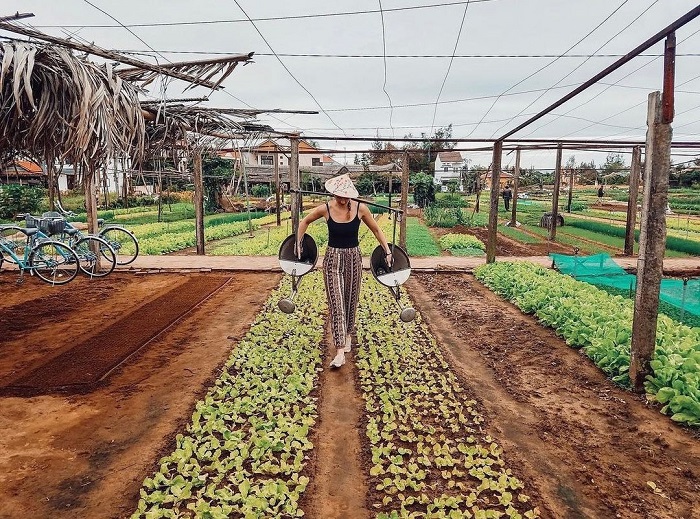
Day 4: Hoi An Market – Japanese Covered Bridge – Ong Pagoda – Tan Ky Ancient House – Phuc Kien Assembly Hall – Trang Tien Bridge – Perfume River.
Morning: Hoi An Market – Japanese Covered Bridge – Ong Pagoda – Tan Ky Ancient House – Phuc Kien Assembly Hall.
Hoi An Market.
This is the largest market in Hoi An, specializing in various goods, from everyday items, foodstuffs to specialties such as souvenirs, lanterns, conical hats to serve the shopping needs of both locals and tourists.
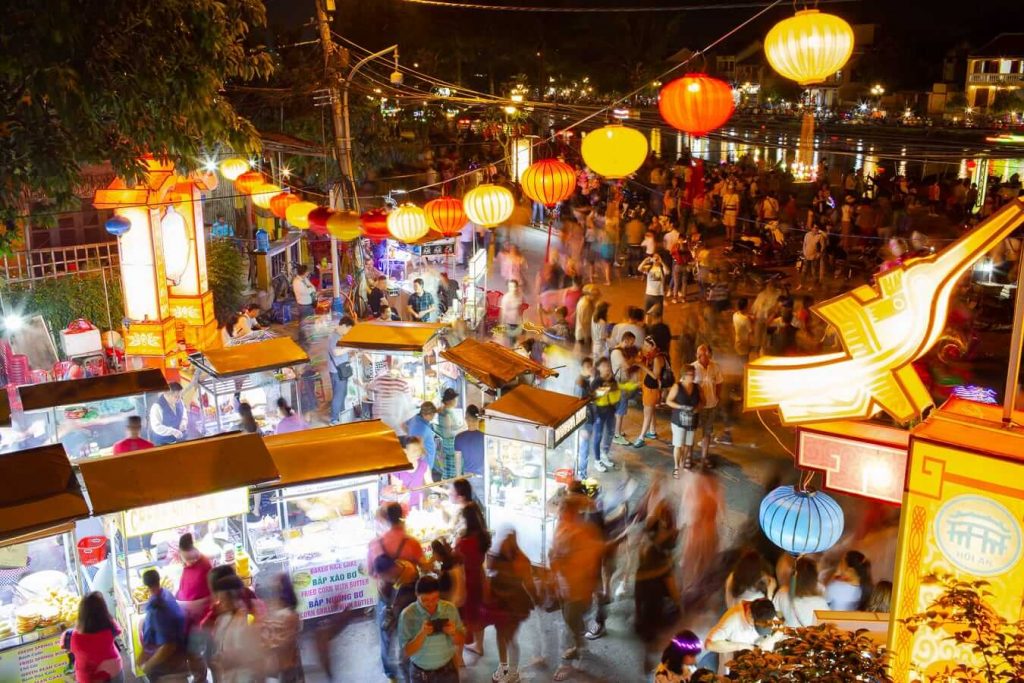
Visiting Hoi An Market in the early morning not only lets you discover local delicacies but also learn about the culture and way of life of the local people.
Japanese Covered Bridge.
The Japanese Covered Bridge, also known as the Japanese Bridge, is a symbol of Hoi An’s Old Town and a familiar destination for every visitor to Hoi An. As the name suggests, the bridge spans a small section of the Thu Bon River, nestled within the heart of the ancient town. Over its more than 400-year history, the bridge stands, ancient and serene, bearing witness to countless changes and embodying the fusion of unique cultures.
Ong Pagoda.
Ong Pagoda is one of the famous tourist spots in Hoi An. The pagoda was built in the 17th century during Hoi An’s most prosperous trading period. Many Chinese traders settled in Hoi An and considered it their second homeland.
Hence, they built architectural works that served their spiritual life, and Ong Pagoda is one of them. The architecture of this pagoda is considered the most typical among the pagodas and temples in Hoi An.
Tan Ky Ancient House.
This is a more than 200-year-old ancient house, known as the oldest house in Hoi An. Until now, it seems to have preserved its unique architecture and original beauty when it was first built.
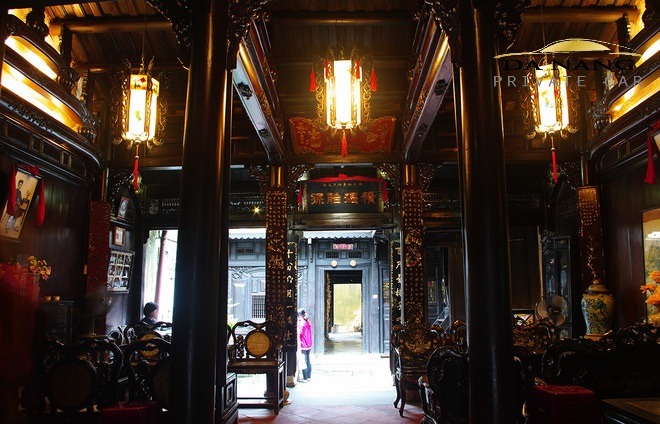
Tan Ky Ancient House was once the residence of the Le family, a noble family. The house is quite spacious with many spaces suitable for displaying ancient artifacts. The front was used for trading, and the back was used for storing goods when ships docked at the port.
Phuc Kien Assembly Hall.
A must-visit attraction in Hoi An, Phuc Kien Assembly Hall, also known as the Kim An Pagoda, is the most splendid and unique of the five assembly halls built by the Chinese community in Hoi An.
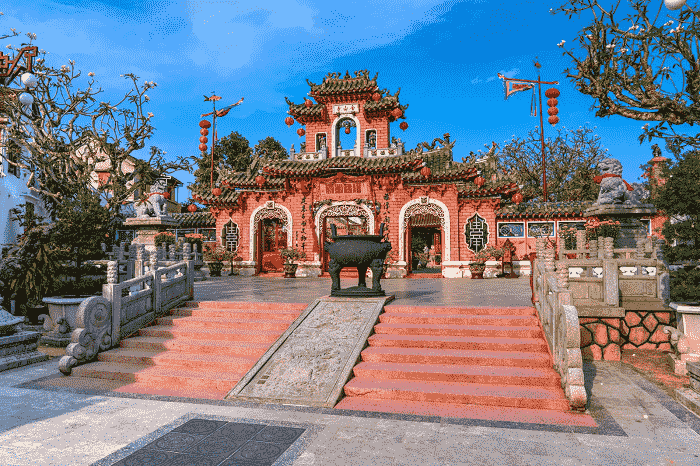
The assembly hall was established by the overseas Chinese from Fujian for gatherings and trading. Later, it was used as a place of worship for Thien Hau Thanh Mau, the sea goddess in their belief. The assembly hall’s meticulous design reflects the distinct Chinese culture and is captivating to many young visitors.
Afternoon: Hoi An – Hue.
After a morning and afternoon wandering around the ancient streets, in the early afternoon, you will move up to Hue. If you take the Hai Van Pass route, you can stop at the pass to admire the scenery and take photos. This will be a very exciting experience. If you’re traveling by motorbike or car, be cautious on the winding roads, as they can be quite dangerous.
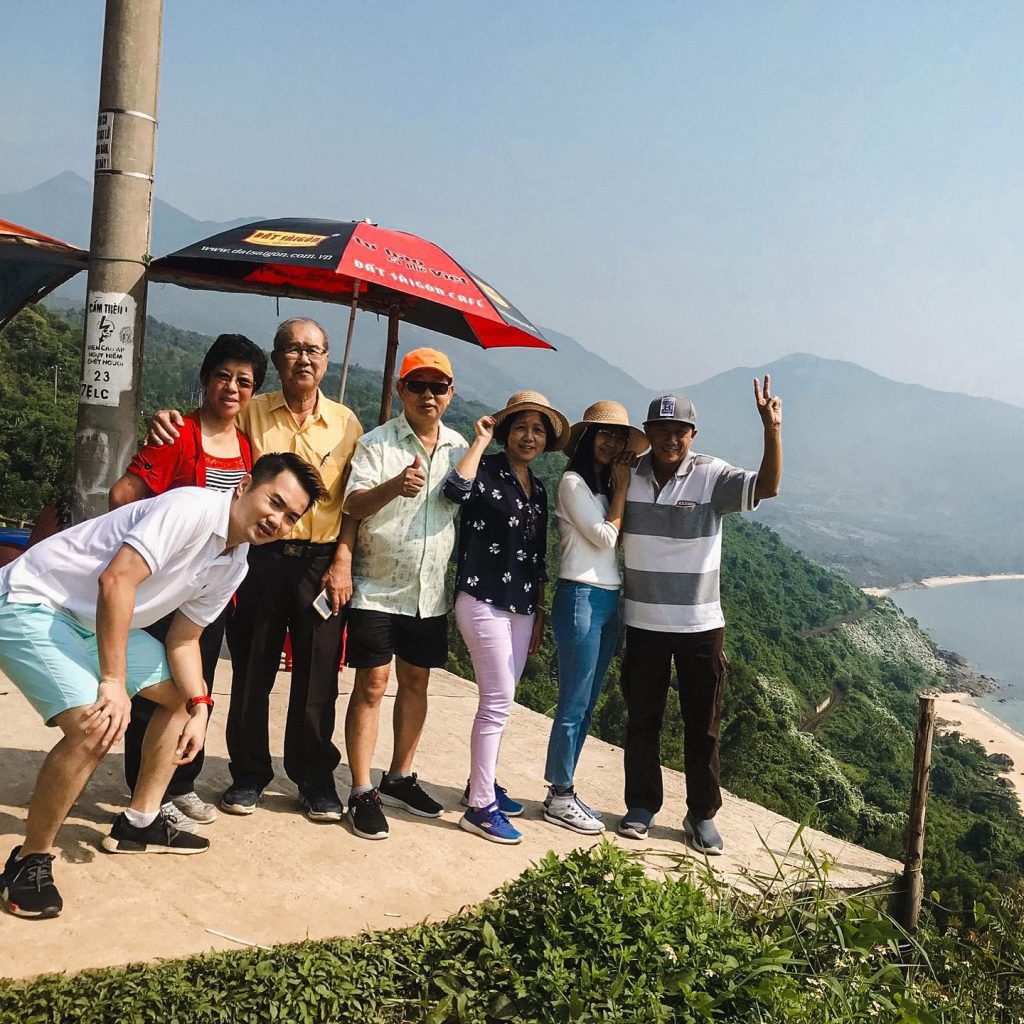
There are various means of transportation from Hoi An to Hue, but it’s recommended to book a private vehicle from Hoi An to Hue with DanangPrivateCar.com’s. This is a good option if you want to stop at Hai Van Pass, Lap An Lagoon, Lang Co Beach, etc. Our journey will provide you with experiences that other means of transportation cannot offer.
Evening: Trang Tien Bridge – Perfume River.
With an age of over a century, Trang Tien Bridge has gone through many ups and downs in the history of the imperial city. When the bridge was first built, it was a proud showcase of advanced and modern French construction techniques.
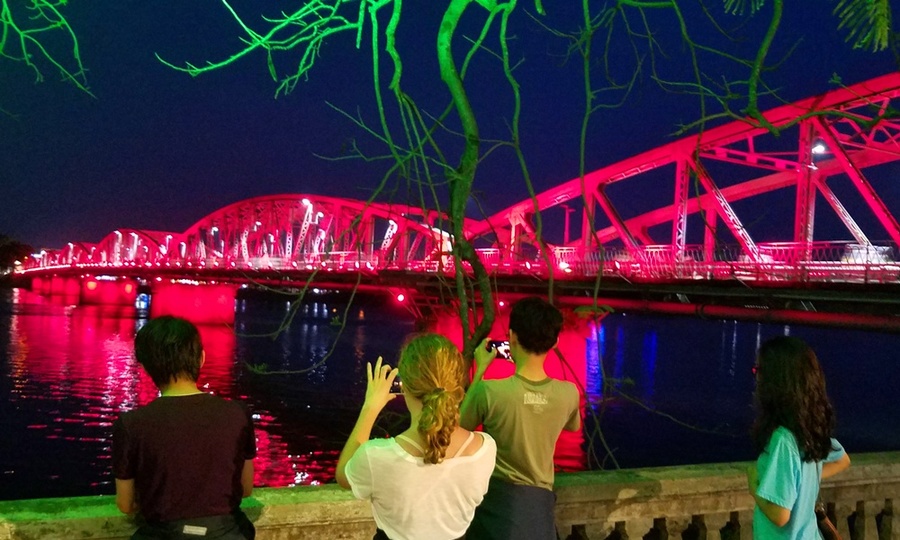
However, just five years after its completion, the bridge was destroyed by a major storm in 1904. In 1906, the bridge was repaired, renovated, and the wooden surface was replaced with a sturdy concrete surface that remains to this day.
In addition to Trang Tien Bridge, Perfume River is also a must-visit when traveling between Hue and Da Nang. The Perfume River is a shade of green like an emerald, reflecting the city’s beauty in its clear and calm waters under the sunlight.
Along the riverbank, architectural structures including temples, gardens, mountains, and forests are reflected on the peaceful waters of the Perfume River, adding a poetic and musical touch to this elegant river.
Day 5: Imperial City of Hue – Dong Ba Market.
Imperial City of Hue.
When you come to Hue, you won’t just enjoy its romantic and poetic beauty, but you’ll also witness the traces of the Imperial City of Hue – one of the must-visit places in Hue. It’s the ancient royal palace of the Nguyen Dynasty in Vietnam. The Imperial City of Hue is a unique and ancient architectural complex that you definitely shouldn’t miss when visiting the Ancient Capital of Hue!
Situated along the banks of the Perfume River, the Imperial City of Hue is part of the Complex of Hue Monuments, recognized as a UNESCO World Heritage Site. It preserves numerous remarkable marks of the Nguyen Dynasty’s imperial court from hundreds of years ago. The Imperial City of Hue includes the Imperial Enclosure (where kings ruled and worked) and the Forbidden Purple City (where the king and the royal family lived).

As the largest architectural complex in Vietnamese history, the Imperial City of Hue took around 30 years to construct, involving thousands of laborers and a series of tasks like river filling, digging, building walls, relocating tombs, along with an immense amount of earth and stone, totaling millions of cubic meters.
When visiting the Complex of Hue Monuments, you will admire hundreds of grand palaces, temples, and majestic altars. With its splendid beauty and unique palace architecture, you’ll undoubtedly be captivated during your visit to the Imperial City.
Thien Mu Pagoda – The Most Sacred Pagoda in the Ancient Capital of Hue.
Thien Mu Pagoda, also known as Linh Mu Pagoda, is one of the most famous and significant pagodas in the city of Hue, Vietnam. This pagoda is situated on Ha Khe Hill, along the banks of the Perfume River, creating a picturesque and solemn landscape. With its long history and unique architecture, Thien Mu Pagoda has become a religious and tourist destination that attracts visitors from both within and outside the country.
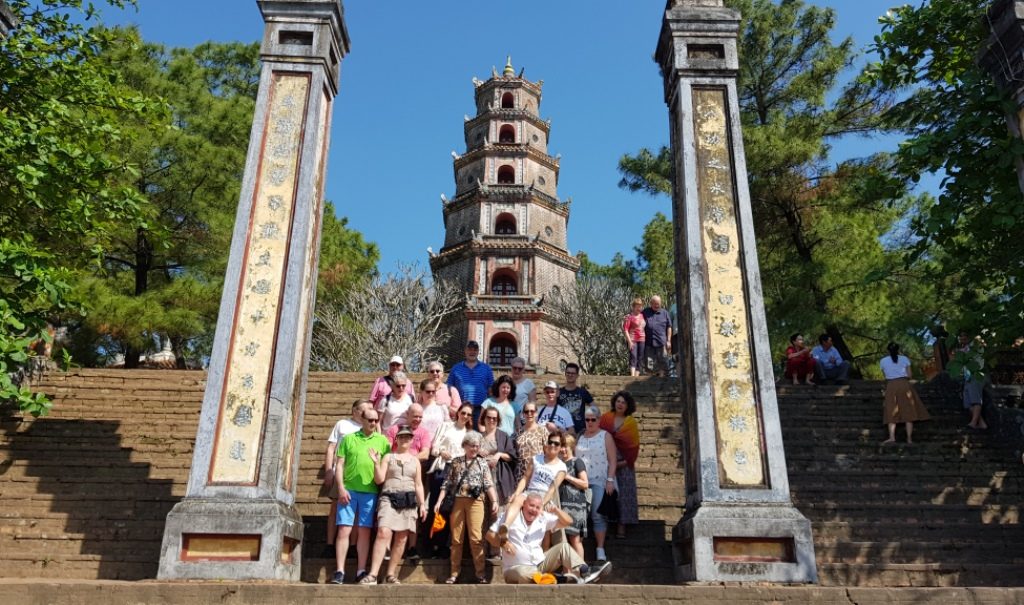
Khai Dinh Tomb – Unique Architecture with Intricate Enamel Art.
Khai Dinh Tomb is one of the royal tombs of the Nguyen Dynasty that has inherited and developed many splendid achievements of ancient Vietnamese architecture. This tomb is meticulously and elaborately designed with various architectural styles and intricate artistic enamel work. The combination of Eastern and Western cultural beauty is vividly showcased, creating a harmonious and striking appeal. If you pay attention, you’ll notice that each royal tomb reflects the personality, character, and contemporary style of the person buried within. This is why despite having many tombs in Hue, each king’s tomb has a distinct design, color scheme, and structure, offering an intriguing exploration for visitors.

If you’re familiar with Vietnamese history, you may know King Khai Dinh, a rather meticulous and demanding king. For his own tomb, he conducted extensive research and inquiry. After considering the opinions of various geographical experts, he chose Chau Chu Mountain, located in Thuy Bang Commune, Huong Thuy Town, approximately 10 km outside the center of Hue, as his final resting place.
Dong Ba Market.
Dong Ba Market is a famous market in Hue. If you visit Hue without buying some souvenirs here or trying the local delicacies at this market, it’s truly a missed opportunity. Dong Ba Market includes a 3-story central building called the “bell floor,” surrounded by rows of houses forming several U-shaped sections bustling with commerce, all embracing the bell floor.
From my experience traveling in Hue, you should explore the fabric and clothing shops on the third floor first to find your preferred fabric for tailoring a Huế-style áo dài (traditional Vietnamese dress) for yourself or as a gift for your grandmother or mother. Afterward, head to the second floor to explore handicrafts, conical hats, ceramics, etc., which make perfect souvenirs from your trip to Hue.

The first floor is where you’ll find various dried seafood from Central Vietnam and dozens of unique Hue-style fish sauces. The sellers are very friendly and provide helpful advice, to the extent that almost no one can leave Hue without buying at least a few bottles of fish sauce. Remember to buy a bottle for yourself to enjoy or as a gift.
As the sun sets, step out of the bell floor and explore the food stalls around the market. This is the most exciting moment you’ve been waiting for during your visit to Dong Ba Market. You can savor various Hue specialties without worrying too much about your budget. Try dishes like turmeric noodles, Sia rice paper, Kim Long grilled pork vermicelli, Phu Hoa and Vy Da fermented pork rolls, Nam Pho noodle soup, Van Cu noodles…

Even though you’ve enjoyed food in many places, you must admit that the bun bo Hue (Hue-style beef noodle soup), banh khoai (Hue-style savory pancake), banh la cha tom (shrimp and pork dumpling), banh nam (flat rice dumpling), banh uot (steamed rice cake), che dau van dac (mung bean sweet soup), che thap cam (mixed sweet soup), che thit quay (roast meat sweet soup) sold at Dong Ba Market are the most authentic and delicious.
And Dong Ba Market marks the end of the 5-day, 4-night journey from Da Nang to Hue to Hoi An. This trip has broadened your knowledge about geography, culture, cuisine, etc. I have truly grown fond of everything here, from the landscapes to the incredibly delicious local specialties and the honest, friendly people of Central Vietnam.
You can book our private car to visit the suggested destinations and then return to Da Nang International Airport after exploring Dong Ba Market. Book Now Hue to Da Nang by Private Car.
Farewell, dear Central Vietnam. See you again on a sunny day soon!
Above is my comprehensive and detailed 5-day, 4-night travel experience in Da Nang – Hue – Hoi An. DanangPrivateCar.com’s hopes that these shared insights will accompany you on your upcoming journey to explore the sunny and windy land of Central Vietnam. Let this trip be more relaxed and enjoyable. DanangPrivateCar.com’s hopes to be your companion on this wonderful journey.


Comments